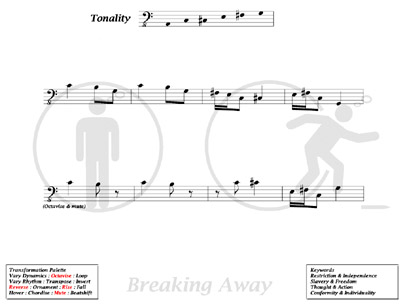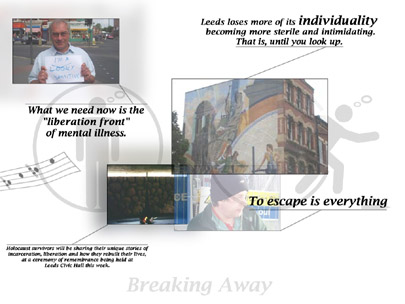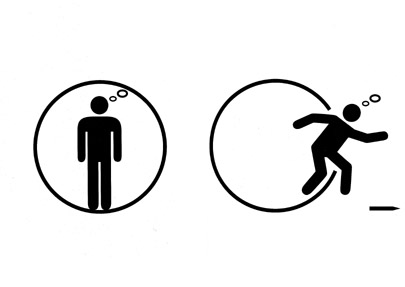Please note: some links on this page are in maintenance.
Fifteen Scenarios for Devising Ensemble (and Active Notation)

Gatto Marte at the Auditorium of Capiago (Como, Italy) – May 6th, 2006
may transform themselves into something else – percussionists, vocalists, banjo-players, home-made instrumentalists, sound effects specialists – anything and everything that makes their music come alive: to tell stories, to accompany film and puppet theatre, to give new life to old songs and to invent new songs with echoes of past traditions and styles.

Working on variations of a bass solo in Fact Manual.
Notation’ as a means of delivering the score to players using laptops and networking technology this makes collaborating on the actual structure of Open-Form work easy to coordinate during rehearsals and also allows players to explore the work and its musical language in more detail on their own terms, away from the rest of the group. The software for Facts of Life will have two components. The first of these is the Fact Manual, which gives the player the opportunity to explore their parts individually, guided by the computer which will present possibilities for improvisation on the core musical material.
This virtual approach makes it possible for the performer to shape a practice session by choosing the degree to which three musical parameters (pitch, rhythm, dynamics ) interact with each other on a given phrase. Players might wish to focus just on pitch and dynamics, leaving the practice surface uncluttered by rhythmic detail.

The Facts of Life drifting through local media on
the theme of “breaking away”.
This presentation of the local Facts of Life builds upon the visual element
f Nigel Morgan’s choral work Esther Dyson’s 12 Design Rules. This piece includes dynamically generated visuals based on searching the Flickr photo-hosting website for keywords in the libretto: you’ll never know what to expect due to the constantly changing content of the site.

Breaking Away, by Pippo Lionni
Breaking Away (Quartet)
This is a story in music of the members of a Quartet stating their individuality, trying to become four solo musicians. From a synchronised unison, whose texture is so dense and duration so short you can’t (easily) make out each instrument, there’s a kind of overture-like march that maintains this effect. As the march progress the whole texture gradually fragments into graceful polyphonic part-writing. This reveals the sound and character of each instrument. Each player also gets an opportunity to be a soloist against a three-part accompaniment, during which the entire compass of each instrument is ‘shown off’. The piece might end with interventions of the opening synchronised chord, only this time exquisitely played with longer durations and effects (trills, tremolos, dynamic change) so each instrument is clearly recognizable – even on a unison chord.
Download
Introduction to The Facts According to Gatto Marte [pdf]
